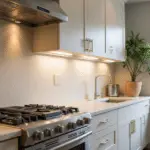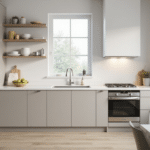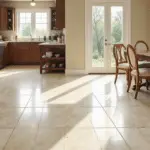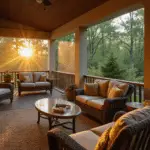Picture this: you’re seated at your dining table, bathed in the warm glow of the midnight sun, surrounded by the rugged beauty of the Alaskan wilderness. Now, what if I told you that you could capture that same sense of natural wonder within the confines of your contemporary dining room? As an architect who’s spent years designing spaces that harmonize with the Arctic environment, I’ve learned that incorporating natural elements into modern interiors isn’t just about aesthetics—it’s about creating a living space that resonates with our innate connection to the natural world.
In this article, we’ll explore how to infuse your contemporary dining room with natural elements, transforming it into a space that’s as invigorating as a brisk hike through the Chugach Mountains. Whether you’re designing your contemporary dining room from scratch or looking to breathe new life into an existing space, these ideas will help you create a dining area that’s both cutting-edge and deeply rooted in nature. So, grab a mug of spruce-tip tea, and let’s embark on this journey to bring the outdoors in!

Key Takeaways
Before we dive into the depths of design, let’s skim the surface with some key points:
- Embrace biophilic design principles to create a dining space that nurtures your connection with nature.
- Harness the power of natural light to create a bright, inviting atmosphere.
- Incorporate indoor plants to purify the air and add a touch of wilderness to your dining area.
- Choose natural materials that reflect the rugged beauty of the outdoors.
- Frame and enhance outdoor views to create a seamless transition between indoor and outdoor spaces.
- Blur the lines between inside and outside with clever design techniques.
Embrace Biophilic Design
In the vast wilderness of Alaska, we’re constantly surrounded by nature’s grandeur. Biophilic design seeks to recreate that connection within our homes. It’s not just about slapping a few plants on a windowsill—it’s about creating spaces that speak to our primordial need for nature.

Contemporary dining room natural elements are the building blocks of biophilic design. They can transform a sterile, modern space into a nurturing environment that feels as comforting as a well-worn hiking trail.
Benefits of Natural Elements
Incorporating natural elements into your dining room is like inviting a piece of the tundra into your home. Studies have shown that exposure to nature, even in small doses, can reduce stress, improve mood, and boost creativity. Imagine the conversations you could have over a meal in a space that makes you feel as calm and centered as a walk through a snow-covered forest.
Harmonize with Modern Aesthetics
Now, I know what you’re thinking: “Kai, how do I make a birch tree fit into my sleek, modern dining room?” The beauty of contemporary design is its flexibility. Just as the stark lines of a modern building can complement the rugged Alaskan landscape, natural elements can enhance the clean aesthetics of a contemporary dining room.

Think of it as creating a microclimate within your home—a space where the warmth of nature meets the cool efficiency of modern design.
Maximize Natural Light
In Alaska, we have a complex relationship with natural light. During the summer, we’re bathed in it 24/7, while winter plunges us into prolonged darkness. Large windows in your dining room can help you make the most of whatever light is available, creating a space that feels as open and airy as the Arctic tundra.
Opt for Light Curtains
When it comes to window treatments, think gossamer thin, like the delicate wings of an Arctic butterfly. Light, airy curtains will filter the sunlight without blocking it entirely, creating a soft, diffused glow that’s perfect for lingering over meals with friends and family.
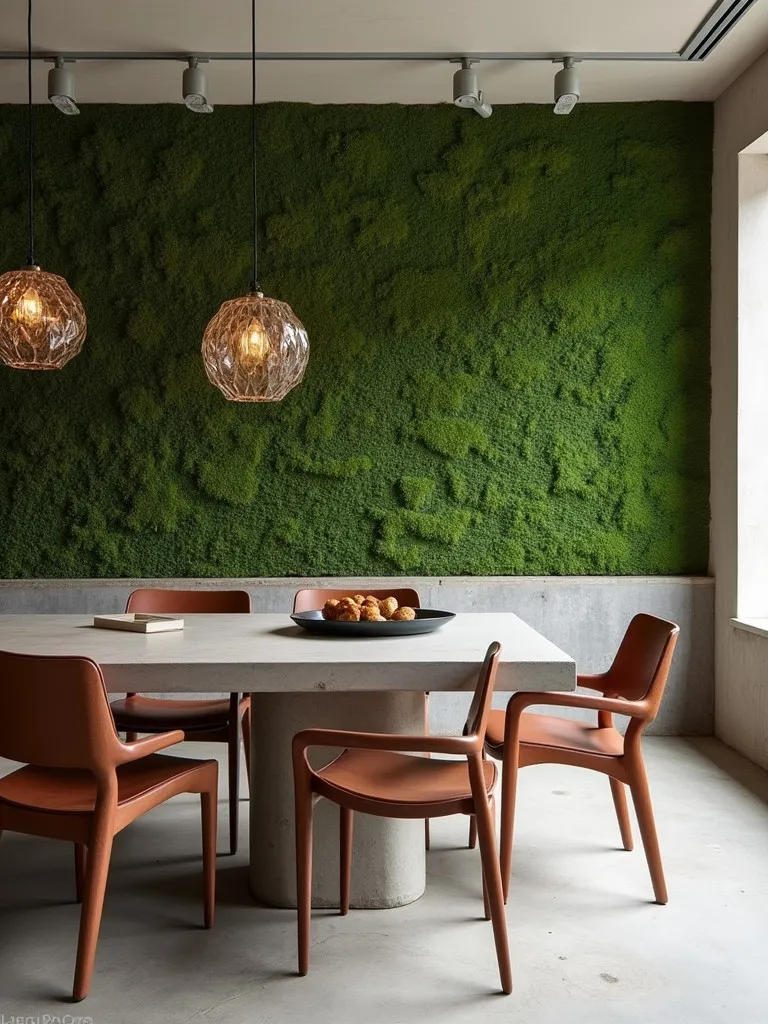
Reflective Surfaces for Brightness
In the land of the midnight sun, we know a thing or two about maximizing light. Incorporating reflective surfaces into your dining room design can help bounce light around the space, creating a brighter, more energizing atmosphere. It’s like capturing a piece of the glittering Arctic ice and bringing it into your home.
Incorporate Indoor Plants
Not everyone has the green thumb of a seasoned botanist. When choosing plants for your contemporary dining room, opt for hardy varieties that can withstand a bit of neglect—think of them as the plant equivalent of a rugged Alaskan sourdough. Succulents, snake plants, and pothos are all excellent choices that can thrive in a variety of conditions.
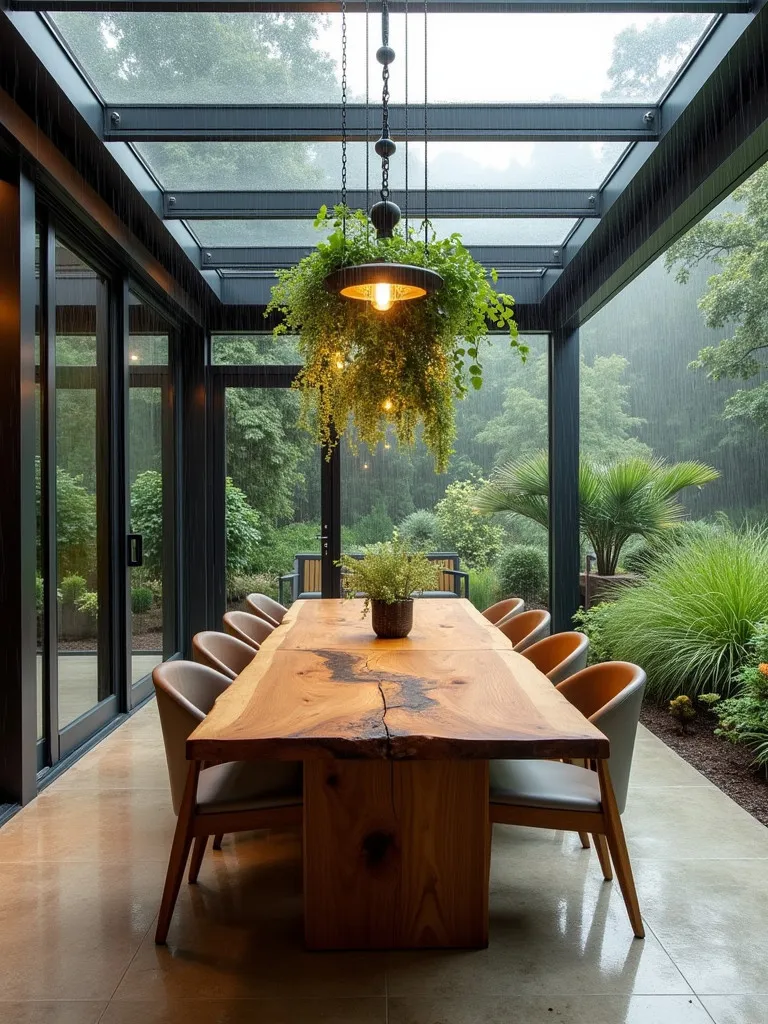
Use Vertical Plant Displays
In Alaska, we’re used to looking up—way up—at towering mountains and the dancing Northern Lights. Bring that vertical element into your dining room with wall-mounted planters or a living wall. It’s a great way to incorporate greenery without sacrificing floor space, perfect for smaller dining areas.
Combine with Decorative Pots
Your plant pots are like the frame around a stunning Alaskan landscape photo—they should enhance, not detract from, the natural beauty within. Choose pots that complement the look and feel of a contemporary dining table, creating a cohesive design that marries the natural and the man-made.
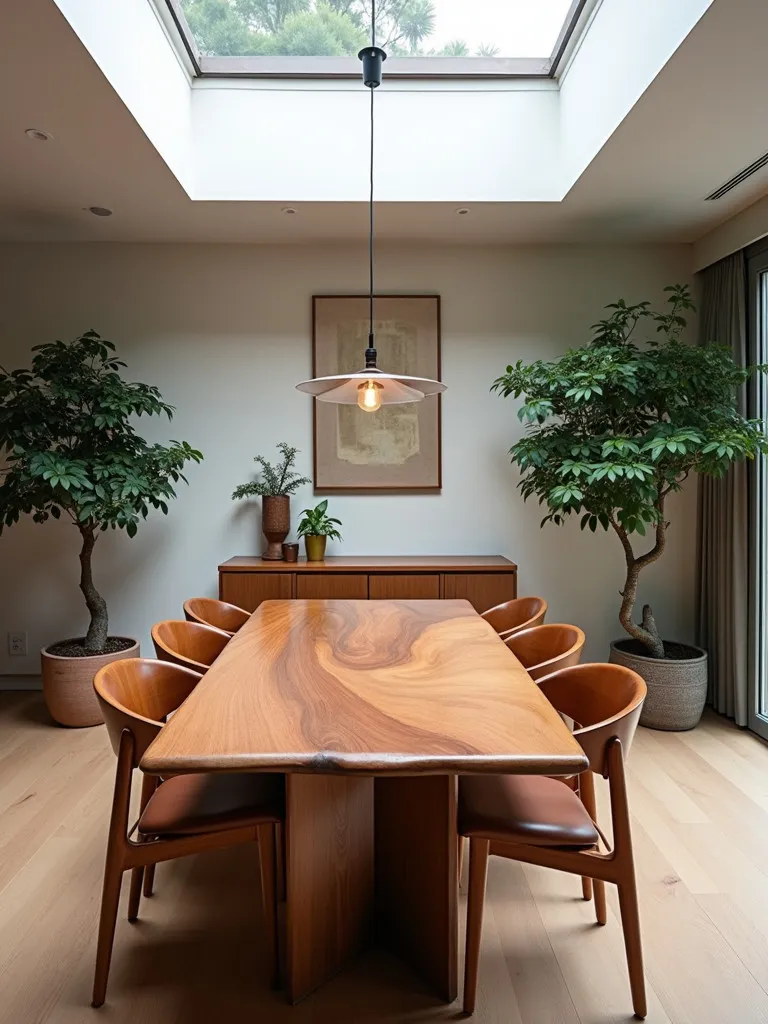
Choose Natural Materials
In Alaska, wood is more than just a building material—it’s a way of life. Incorporating wooden elements into your contemporary dining room natural elements can add warmth and texture, creating a space that feels as inviting as a cozy log cabin amid a snowstorm.
Stone for Timeless Elegance
The rugged cliffs and rocky shores of Alaska are a testament to the timeless beauty of stone. Bring that same sense of permanence and elegance into your dining room with stone accents. A slate feature wall or a granite tabletop can add a touch of natural sophistication to your space.

Organic Textures in Upholstery
When it comes to seating, think beyond the standard casual and versatile contemporary dining chairs. Opt for upholstery with organic textures that mimic the varied landscape of Alaska—rough like tree bark, soft like moss, or smooth like river stones. These tactile elements can add depth and interest to your dining space.
Enhance Outdoor Views
In Alaska, every window is a frame for nature’s masterpiece. Apply this same principle to your dining room by positioning your table to take advantage of any outdoor views. If you’re not blessed with a view of the Chugach Mountains, create your own by hanging landscape artwork that brings the outdoors in.
Use Transparent Dividers
In the vast Alaskan wilderness, boundaries are often fluid and changing. Bring this sense of openness into your dining room with transparent dividers. Glass partitions or open shelving units can define spaces without blocking light or views, creating a dining area that feels both intimate and expansive.
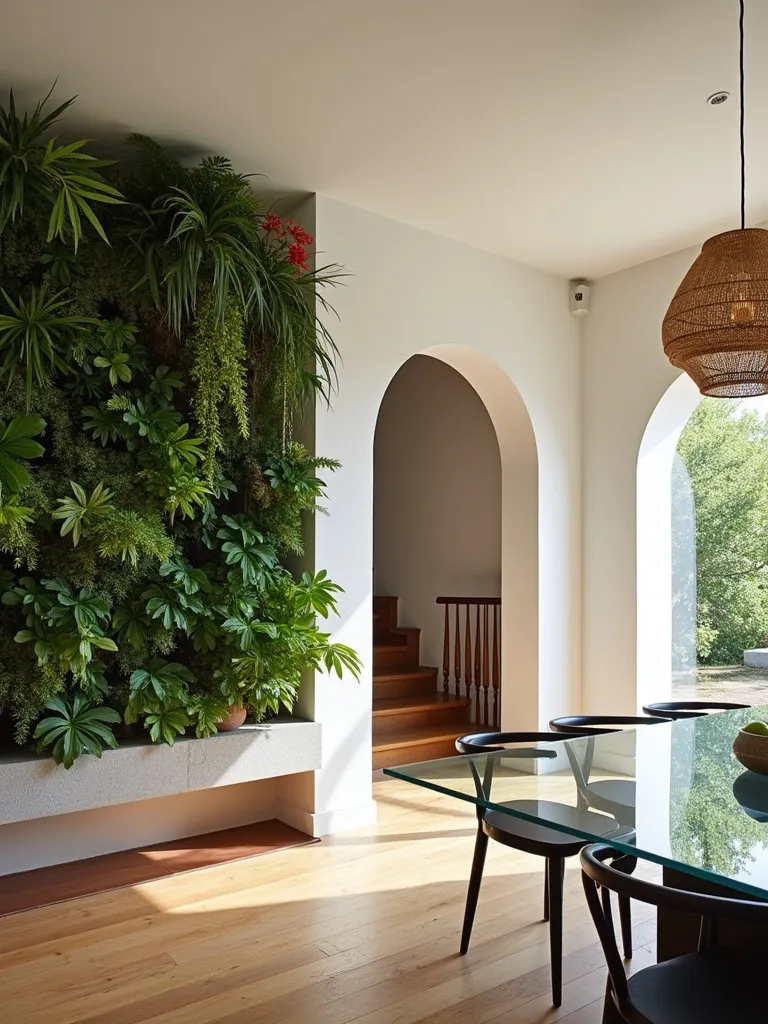
Integrate Outdoor-Inspired Art
If you can’t bring in actual outdoor views, why not create your own? Incorporate artwork inspired by natural landscapes—think abstract representations of glaciers, forests, or the Northern Lights. These pieces can serve as windows to the natural world, even in the most urban of settings.
Seamless Indoor-Outdoor Transition
In Alaska, we live for those precious summer months when we can throw open the doors and let the outside in. Recreate that feeling year-round with sliding glass doors that open onto a patio or balcony. It’s a great way to expand your dining space and create a seamless transition between indoors and out.
Create Patio Dining Extensions
Why stop at the threshold? Extend your dining area outdoors with a patio dining space. Use weather-resistant materials that can stand up to the elements (we Alaskans know a thing or two about harsh weather), and create a space that allows you to enjoy meals al fresco whenever the mood strikes.
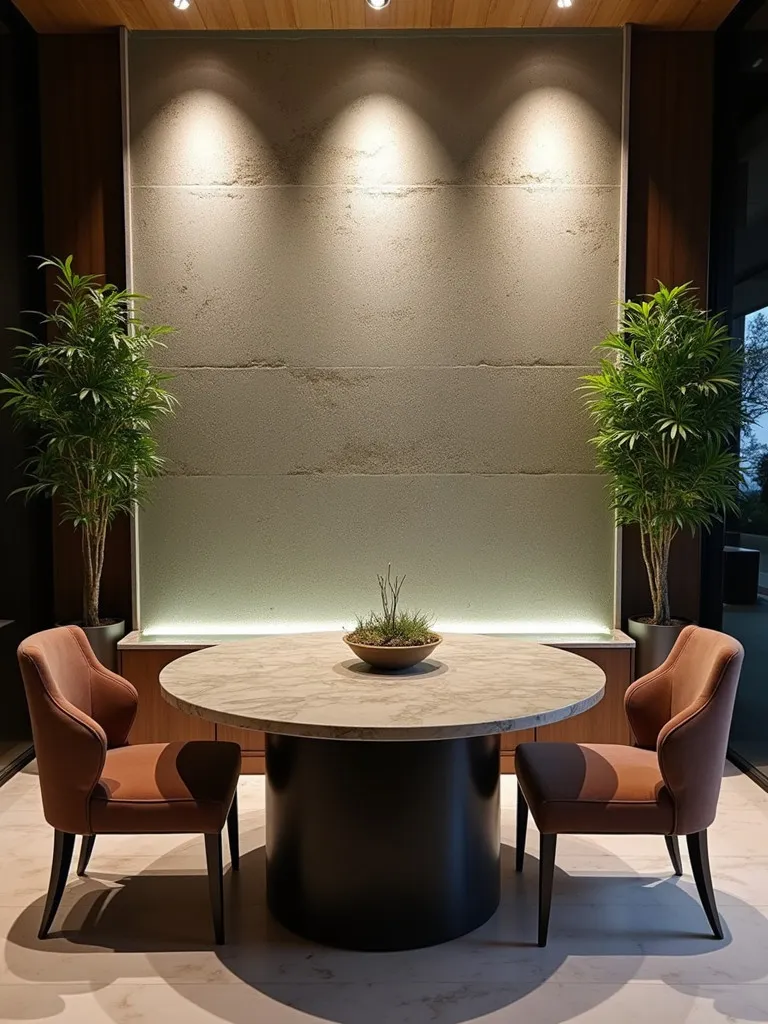
Use Consistent Flooring Materials
To truly blur the lines between indoor and outdoor spaces, consider using consistent flooring materials. A continuous flow of hardwood or stone from your dining room to your patio can create a unified space that feels expansive and connected to the natural world.
Closing Thoughts
As we’ve journeyed through these contemporary dining room natural elements ideas, I hope you’ve caught a glimpse of the transformative power of nature in design. Just as the Alaskan wilderness shapes those who inhabit it, incorporating natural elements into your dining room can profoundly impact your daily life.
Remember, creating a space that harmonizes with nature isn’t about replicating the outdoors exactly—it’s about capturing the essence of the natural world and weaving it into the fabric of your home. Whether it’s the warm glow of natural light, the calming presence of indoor plants, or the tactile pleasure of natural materials, each element contributes to a dining space that feels alive and connected to the world around it.
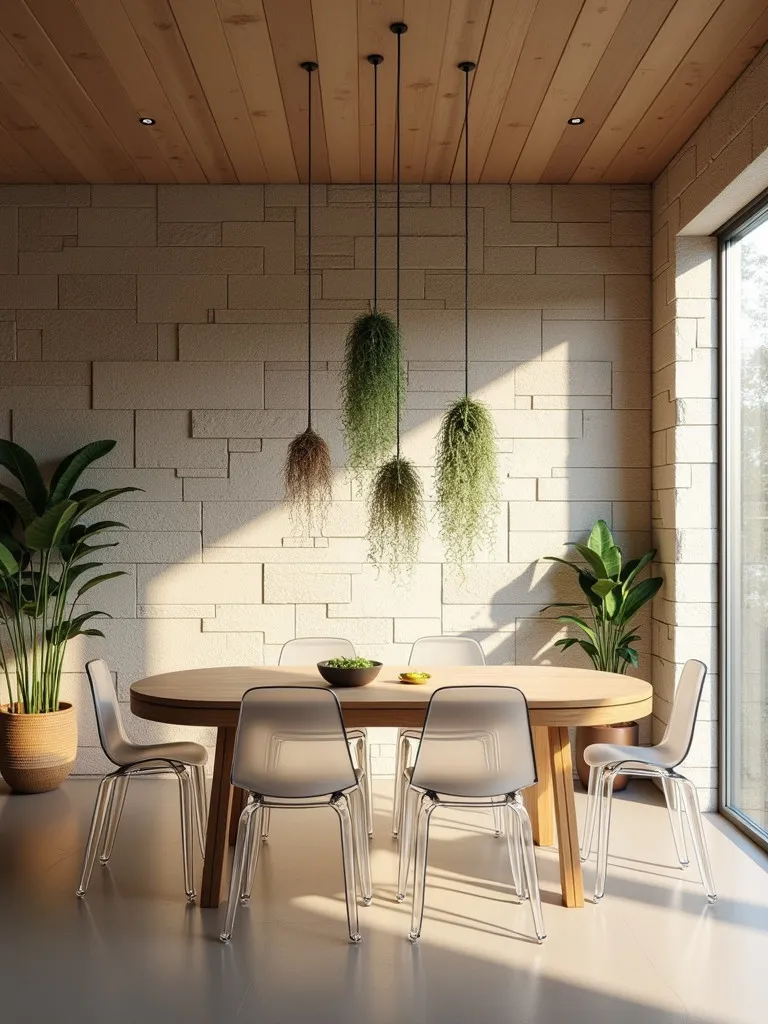
So, as you sit down to your next meal, take a moment to consider how you might bring a bit of the outdoors in. Whether you’re overlooking the Alaskan tundra or a bustling city street, there’s always a way to create a dining space that nurtures your connection with nature. After all, in the words of John Muir, “The mountains are calling, and I must go”—but with these design ideas, you can bring a piece of the mountains home with you.



